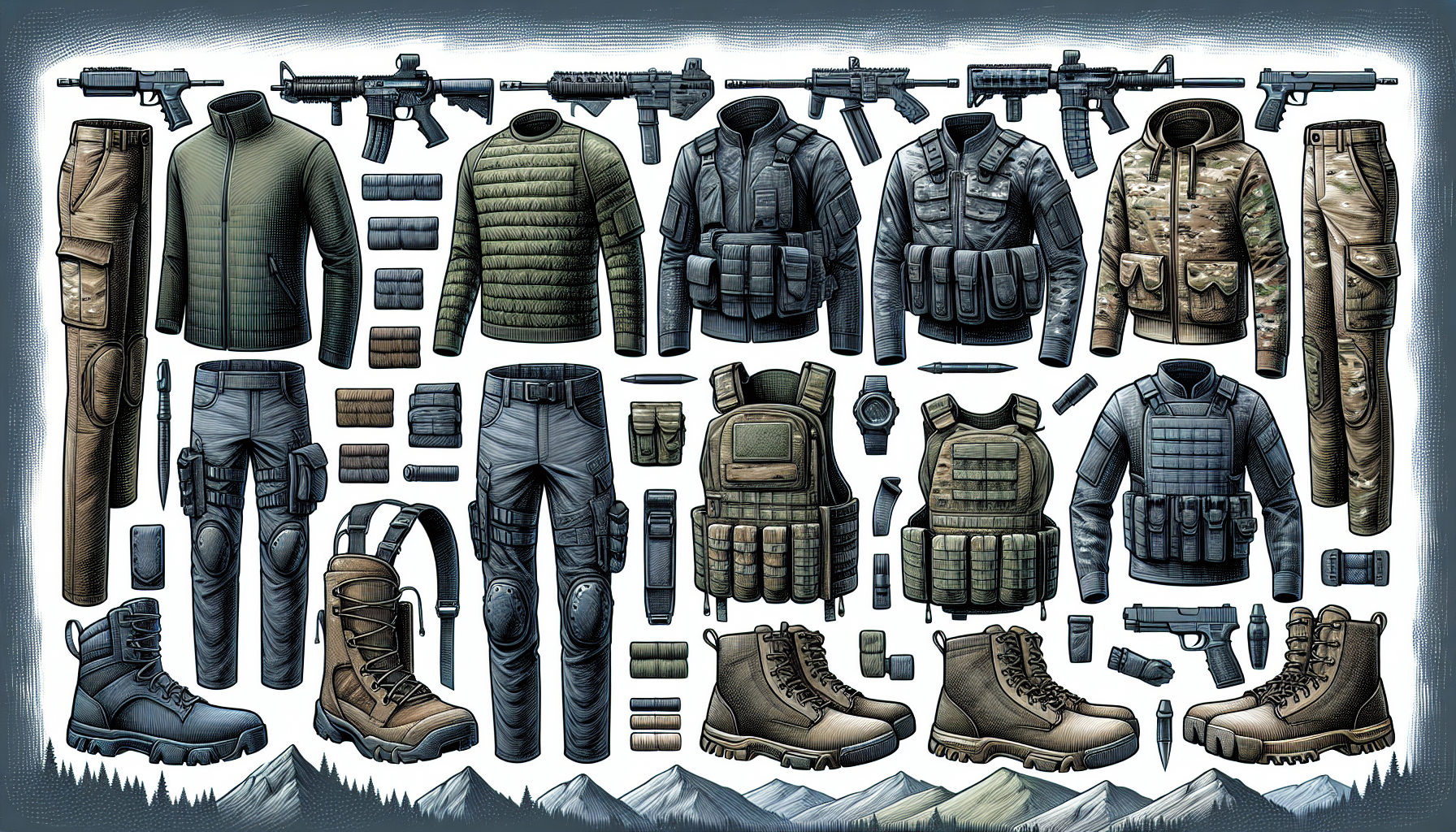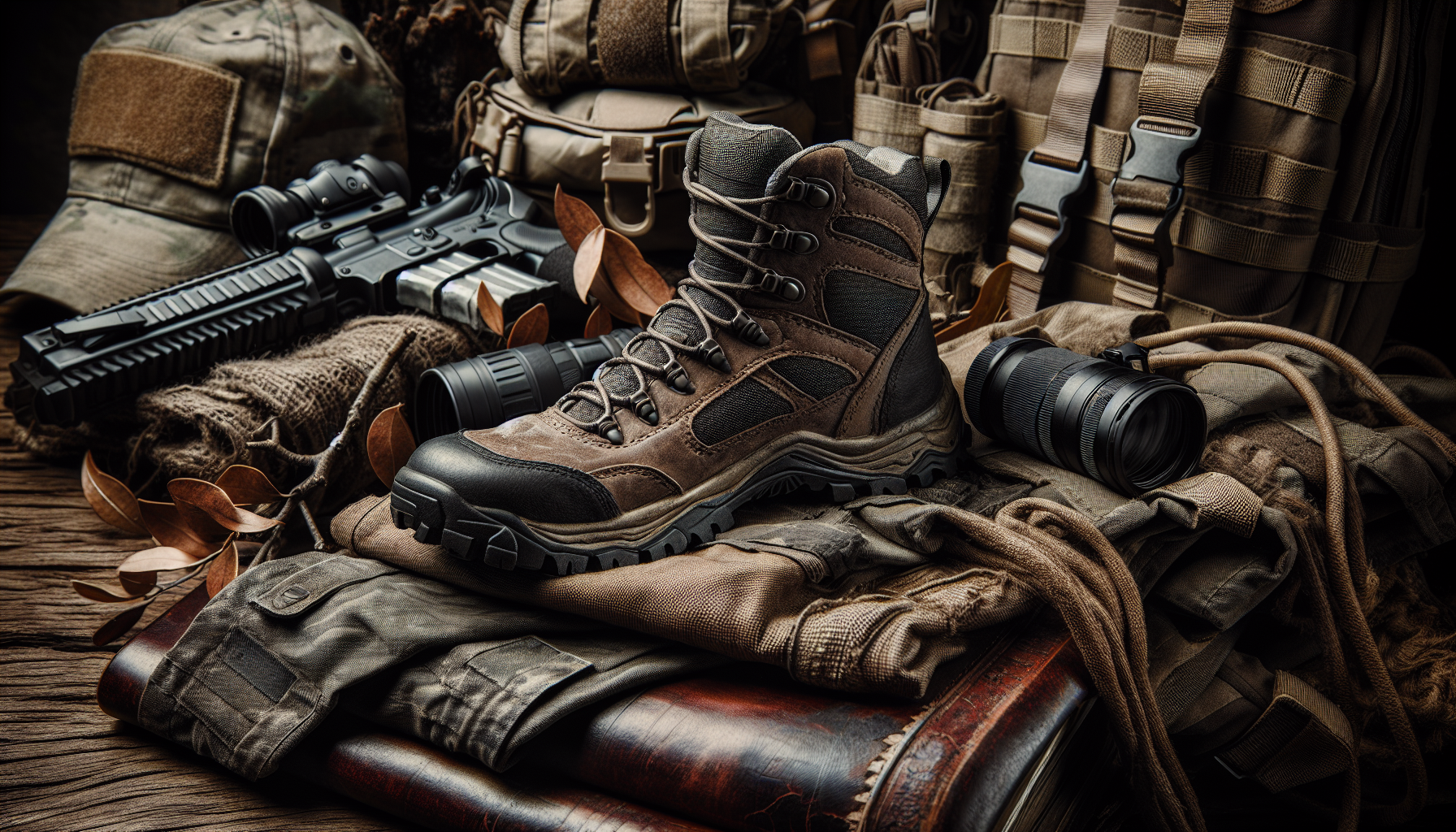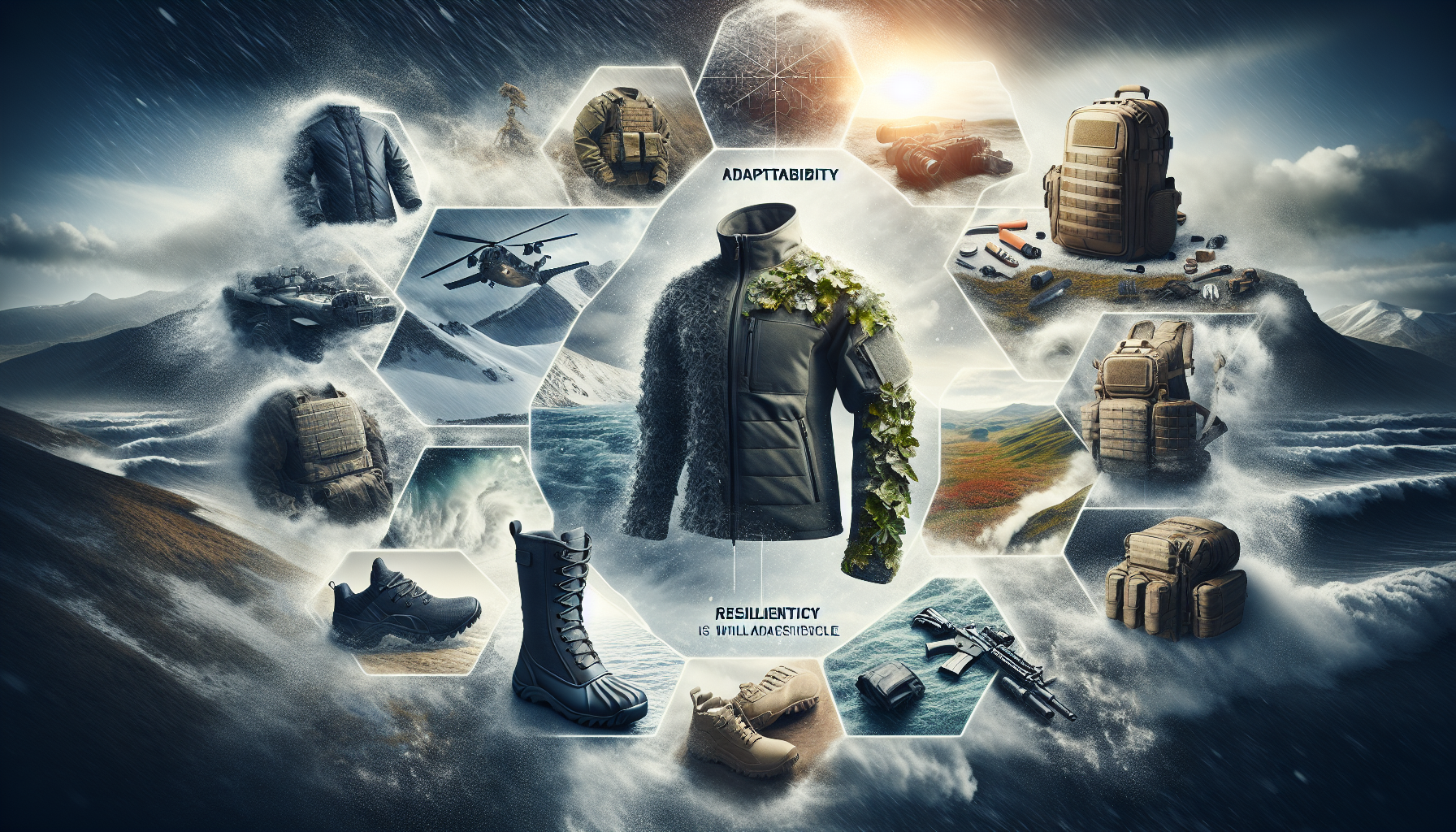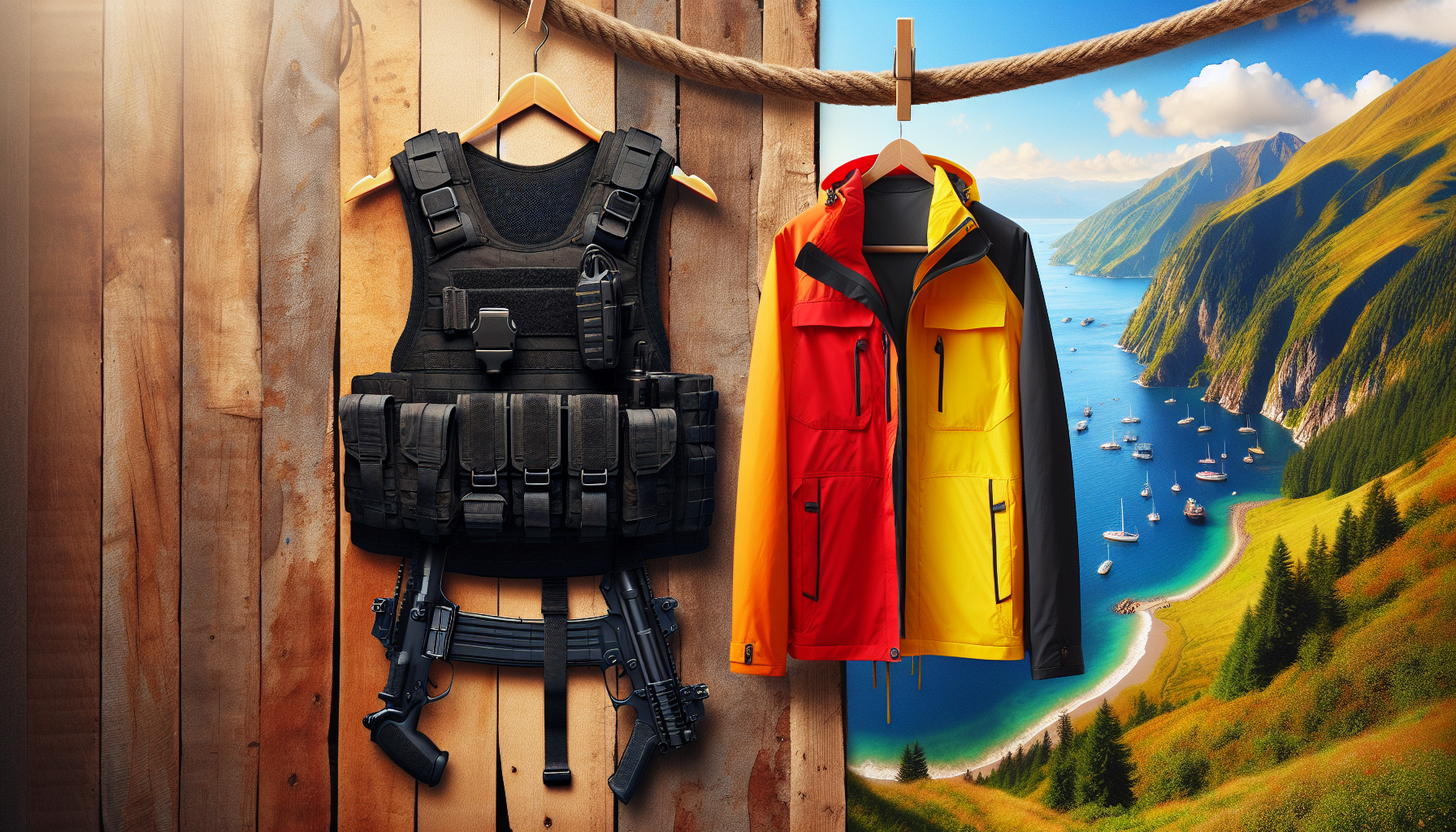Maximizing Comfort And Functionality In Tactical Clothing
Maximizing Comfort And Functionality In Tactical Clothing
If you’re someone who values both comfort and functionality in your clothing choices, then tactical clothing might just be the perfect fit for you. From military personnel to outdoor enthusiasts, tactical clothing is designed to provide the utmost comfort and practicality in any situation. With its durable materials, innovative features, and versatile design, tactical clothing ensures that you can tackle any challenge that comes your way with ease. Whether you’re navigating rugged terrains or simply looking for reliable everyday wear, this article will explore the various ways in which tactical clothing maximizes both comfort and functionality, making it a must-have for anyon seeking a blend of style and practicality.
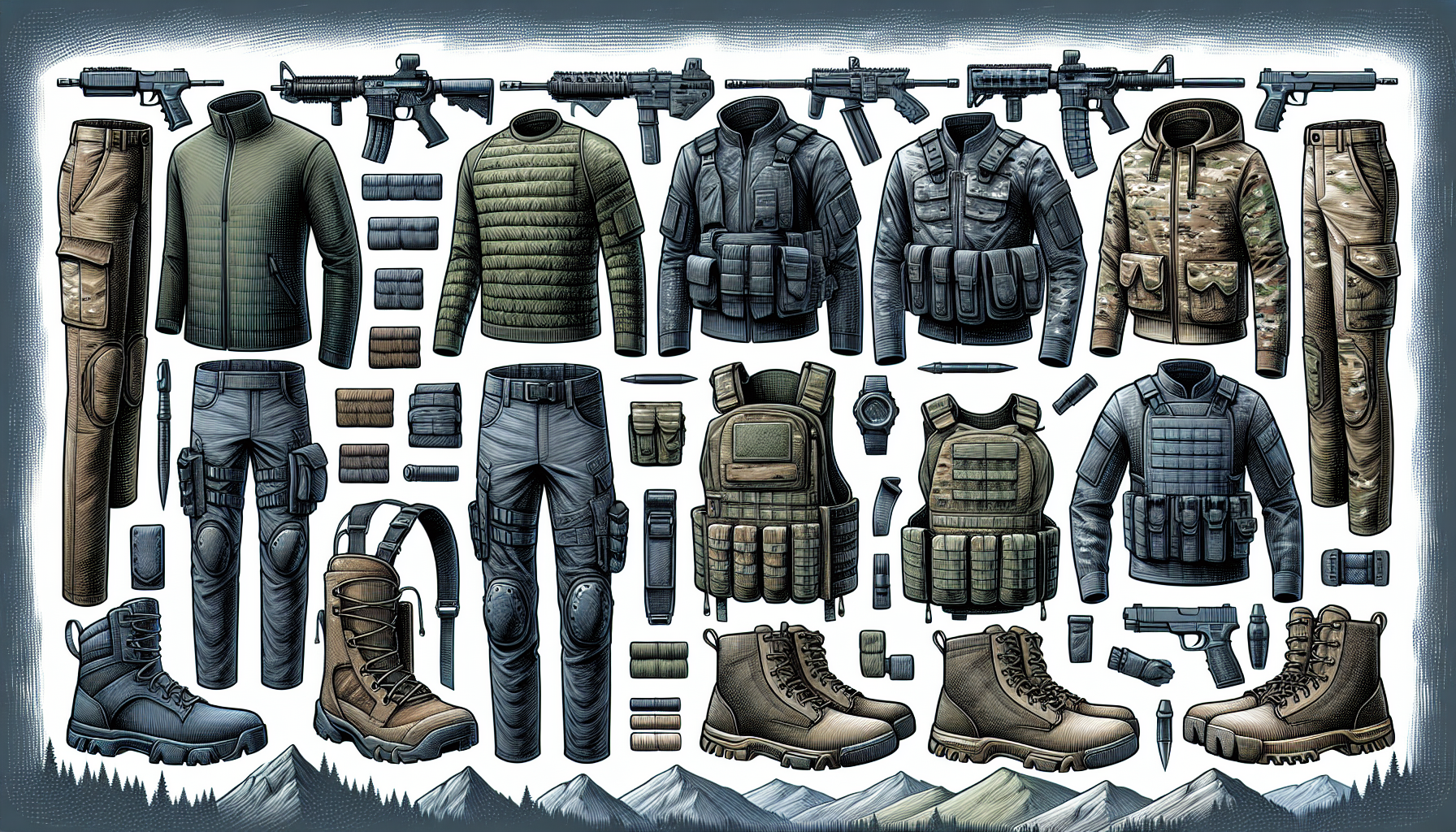
Choosing the Right Material For Your Tactical Clothing
When it comes to tactical clothing, choosing the right material is crucial for ensuring the comfort and functionality you need. There are several considerations to keep in mind during the material selection process. First and foremost, durability is of utmost importance. Tactical clothing needs to withstand rigorous use in challenging environments, so opting for high-quality, durable materials is essential. Additionally, the weight of the material should be taken into account. Lightweight fabrics can provide better mobility and reduce fatigue during extended wear.
Key Material Options There are a variety of material options available for tactical clothing, each with its own unique qualities. Some popular choices include nylon, polyester, and cotton blends. Nylon is known for its exceptional strength and abrasion resistance, making it a top choice for tactical gear. Polyester is another reliable option, offering durability and moisture-wicking properties. Cotton blends provide a comfortable feel against the skin while maintaining breathability. By considering the specific requirements of your tactical activities, you can select the material that best suits your needs.
Comparison of Material Qualities To make an informed decision, it’s important to compare the qualities of different materials. Nylon is highly resistant to tears and punctures, making it ideal for intense outdoor use. Polyester excels in moisture management, keeping you dry and comfortable even during high-intensity activities. Cotton blends are known for their breathability and softness, ensuring a comfortable experience in various climates. By understanding the strengths of different materials, you can choose the one that aligns with your comfort and functionality needs.
Designing for Comfort
Comfort should be a top priority when designing tactical clothing. The concept of ergonomics plays a crucial role in achieving this goal. Ergonomic design considers the natural movements and body mechanics of the wearer, ensuring that the clothing supports and enhances their range of motion. Optimal fit is also vital. Tactical clothing should be designed to fit snugly but not restrictively, allowing for unrestricted movement while maintaining a streamlined profile.
Optimizing Fit and Range of Motion To maximize comfort, tactical clothing should be designed to optimize fit and range of motion. Features such as articulated elbows and knees, gusseted crotches, and stretch panels allow for increased mobility and flexibility. Adjustable waistbands and cuffs ensure a personalized fit, allowing you to customize the clothing to your body shape. By focusing on these design elements, tactical clothing can provide the comfort needed for extended wear in demanding situations.
Importance of Breathability Breathability is another crucial factor to consider when designing tactical clothing. Breathable fabrics allow air circulation, keeping you cool and preventing the build-up of moisture and sweat. This is particularly important in hot and humid climates or during intense physical activities. Moisture-wicking properties help to draw sweat away from the body, enhancing comfort and preventing chafing. By prioritizing breathability in design, tactical clothing can promote a comfortable and dry experience for the wearer.
Enhancing Functionality
Tactical clothing should not only be comfortable but also highly functional. Enhancing functionality can be achieved through various design elements and features that cater to the specific needs of tactical professionals. Here are some key aspects to consider:
Strategic Pocket Placement Strategically placed pockets are essential for easy accessibility to essential gear and equipment. Different tactical professions may require specific pocket configurations, allowing for efficient organization and quick access. Consider the placement, size, and type of pockets based on your specific needs to optimize functionality in tactical clothing.
Reinforced Construction for Durability To ensure longevity, tactical clothing should feature reinforced construction in high-stress areas. Double stitching, bartacks, and reinforced panels help to withstand wear and tear, making the clothing more durable. Reinforced knees, elbows, and seat areas are particularly important for activities that involve kneeling, crawling, or sitting on rough surfaces.
Integration of Technology Incorporating technology into tactical clothing can greatly enhance functionality. Built-in pockets or compartments for carrying communication devices, GPS systems, or hydration packs allow for easy and convenient access to essential tools. Additionally, compatibility with modular attachments and gear systems can provide further customization options, catering to specific mission requirements.
Ensuring Ease of Maintenance
Maintenance is a vital aspect to consider when selecting tactical clothing. Ease of maintenance can save time and effort, ensuring that the clothing remains clean and functional throughout its lifespan. Here are some key considerations:
Machine-Washable and Quick-Drying Fabrics Tactical clothing should be machine-washable for easy cleaning. Look for fabrics that are resistant to fading and shrinking, allowing you to launder the clothing without compromising its quality. Quick-drying fabrics are also beneficial, as they minimize drying time and allow for fast reuse, particularly in humid or wet environments.
Resistance to Stains and Odors Stains and odors are inevitable in tactical environments, but opting for clothing with stain and odor resistance can help mitigate these issues. Fabrics treated with special coatings or finishes can repel liquids and prevent absorption, making it easier to remove stains. Odor-resistant properties can help combat unpleasant smells, especially during extended wear in high-intensity activities.
Simple Repair and Replacement When it comes to tactical clothing, the ability to repair or replace individual components is crucial. Look for clothing that features replaceable buttons, zippers, or velcro fasteners, allowing for simple repairs in the field. Modular design elements also enable easy replacement of damaged or worn-out parts, eliminating the need to replace the entire garment.
Considering Climate and Environmental Factors
The climate and environmental conditions in which tactical activities are carried out play a significant role in determining the suitability of clothing. Tactical professionals often operate in a wide range of environments, and their clothing should accommodate these varying conditions. Here are some key factors to consider:
Temperature Regulation Tactical clothing should be designed to regulate body temperature effectively. In hot climates, lightweight and breathable fabrics help to prevent overheating and promote airflow. In colder environments, insulation and layering options are crucial to trap body heat and maintain warmth. The ability to add or remove layers as needed ensures adaptability to changing temperature conditions.
Protection against Elements Tactical professionals often face challenging weather conditions, including rain, snow, wind, and extreme heat or cold. Clothing should be designed to provide protection against these elements. Waterproof or water-resistant fabrics keep you dry in wet conditions, while windproof materials prevent wind-chill. Heat-resistant fabrics can protect against extreme temperatures, allowing for prolonged exposure to heat without compromising safety.
Adaptability to Various Environments The ability of tactical clothing to adapt to different environments is essential. Clothing that can be easily layered or adjusted to cater to changing conditions ensures versatility. Climate-specific features, such as removable hoods, ventilation options, or built-in insulation, provide adaptability to diverse environments. By considering the specific environmental factors, tactical clothing can offer the necessary protection and adaptability for the wearer.
Addressing Specialized Needs
Different tactical professions may have specific requirements that need to be addressed in clothing design. Here are some considerations for meeting specialized needs:
Specific Requirements for Different Tactical Professions Tactical professionals from various fields, such as law enforcement, military, or firefighting, have unique requirements in terms of functionality and protection. For example, law enforcement officers may require concealed carry options or extra reinforcement in specific areas. Designing clothing that caters to these specific professions ensures that the clothing enhances performance and meets the demands of the job.
Gender-Specific Design Considerations Recognizing the physiological differences between genders, gender-specific design considerations can optimize comfort and functionality. Women’s tactical clothing should take into account differences in body shape and size, providing a tailored fit that doesn’t compromise mobility. Features such as adjustable waistbands, contoured seams, and increased chest room can significantly improve the overall fit and comfort for female tactical professionals.
Accommodating Special Equipment or Gear Tactical activities often involve the use of specialized equipment or gear. Clothing should be designed to accommodate the integration and easy access of these tools. Reinforced pockets, attachment points, or compatibility with load-bearing vests or harnesses allow for the secure and efficient storage of gear. By considering the specific equipment requirements, tactical clothing can effectively support the carrying and utilization of essential tools.
Testing and Evaluation
To ensure the effectiveness and performance of tactical clothing, extensive testing and evaluation are necessary. This involves real-world field testing as well as gathering feedback from professionals. Here’s why these steps are crucial:
Real-World Field Testing Field testing involves putting tactical clothing to the test in real-world scenarios. This allows for the identification of any design flaws or areas that require improvement. Field testing provides valuable insight into the clothing’s durability, comfort, and overall performance, ensuring that it meets the rigorous demands of tactical activities.
Feedback from Professionals Gathering feedback from professionals who regularly wear tactical clothing is invaluable. Their firsthand experience and input can provide valuable insights into the strengths and weaknesses of the clothing. By listening to their feedback and implementing necessary changes, tactical clothing manufacturers can continually improve and fine-tune their designs to better meet the needs of the end-users.
Continuous Improvement and Iterative Design Continuous improvement and iterative design are essential in the development of tactical clothing. Incorporating feedback and making incremental changes help manufacturers refine their products over time. This iterative process ensures that tactical clothing is continually evolving, adapting to the changing needs and demands of tactical professionals. By prioritizing continuous improvement, manufacturers can enhance comfort, functionality, and overall performance.
Ensuring Safety and Protection
Safety and protection are paramount in tactical environments. Tactical clothing should be designed to provide appropriate safeguards against potential hazards. Here are some key considerations:
Fire-Resistant and Flame-Retardant Fabrics In situations that involve potential exposure to fire or flames, fire-resistant and flame-retardant fabrics are crucial. These fabrics are designed to resist ignition and burn slowly, reducing the risk of injury. Incorporating such fabrics into tactical clothing ensures that the wearer is protected in high-risk environments.
Ballistic Resistance and Armor Integration Tactical professions that involve dealing with potential ballistic threats may require clothing with ballistic resistance. This can be achieved through the inclusion of specialized materials or the ability to integrate armor panels. Tactical clothing should provide a secure and comfortable fit when used in conjunction with protective gear, ensuring maximum safety in high-risk situations.
Protection against Hazards or Chemicals Some tactical activities may involve exposure to hazardous substances or chemicals. Clothing designed to provide protection against such hazards is vital. Chemical-resistant fabrics and coatings can prevent the penetration of harmful substances, minimizing the risk of exposure. Integrated hoods, masks, or other protective features can further enhance safety in hazardous environments.
Importance of Proper Sizing
Proper sizing is crucial for ensuring the comfort and functionality of tactical clothing. Here’s why it matters:
Understanding Sizing Standards Tactical clothing often follows standardized sizing systems, such as small, medium, large, or numeric sizes. Understanding these sizing standards and how they correspond to your body measurements is essential for selecting the right fit. Referencing size charts and measuring yourself accurately can help you choose the correct size, ensuring optimal comfort and functionality.
Customization Options for Individual Fit Every individual has unique body proportions and requirements. Customization options, such as adjustable waistbands, cuff adjustability, or reinforced panels, allow for individual fit adjustments. Tactical clothing that provides customization options ensures that you can tailor the fit to your specific body shape, enhancing both comfort and functionality.
Consideration for Layering Tactical clothing should account for layering, as it is often necessary in fluctuating temperatures or changing environments. Proper sizing allows for seamless layering without compromising mobility or comfort. Adequate room in the clothing’s design ensures that layering options can be added or removed as needed, providing adaptability to diverse weather conditions.
Cost-Effectiveness and Longevity
While comfort and functionality are essential, considering cost-effectiveness and longevity is also crucial when investing in tactical clothing. Here are some key factors to keep in mind:
Balancing Quality and Affordability Finding the right balance between quality and affordability is important. While it’s tempting to opt for the cheapest option, compromising on quality can lead to clothing that wears out quickly or doesn’t perform as expected. Investing in high-quality tactical clothing may require a higher upfront cost, but it can save you money in the long run by providing durability and longevity.
Investing in Durable Tactical Clothing Choosing tactical clothing made from durable materials and featuring reinforced construction ensures longevity. Paying attention to the quality of stitching and overall construction can help you identify clothing that will withstand the demands of tactical activities. By investing in durable garments, you reduce the need for frequent replacement, ultimately saving money.
Long-Term Cost Benefits High-quality tactical clothing often comes with long-term cost benefits. Garments that are designed to last tend to require fewer repairs and replacements in the long run. Additionally, clothing with added features such as stain resistance or odor control properties can save money on cleaning or specialized care. By choosing quality tactical clothing, you can enjoy the benefits of its longevity and cost-effectiveness.
In conclusion, maximizing comfort and functionality in tactical clothing requires careful consideration of various factors. From choosing the right materials and designing for comfort to enhancing functionality and ensuring ease of maintenance, each aspect plays a significant role in creating effective tactical clothing. By addressing climate and specialized needs, incorporating testing and evaluation, and prioritizing safety, tactical clothing can provide the utmost comfort, protection, and performance for tactical professionals. Additionally, understanding the importance of proper sizing and considering cost-effectiveness and longevity contribute to a well-rounded approach in selecting tactical clothing. With a comprehensive understanding of these factors, you can find the perfect balance between comfort, functionality, and affordability, ensuring optimal performance in any tactical situation.

